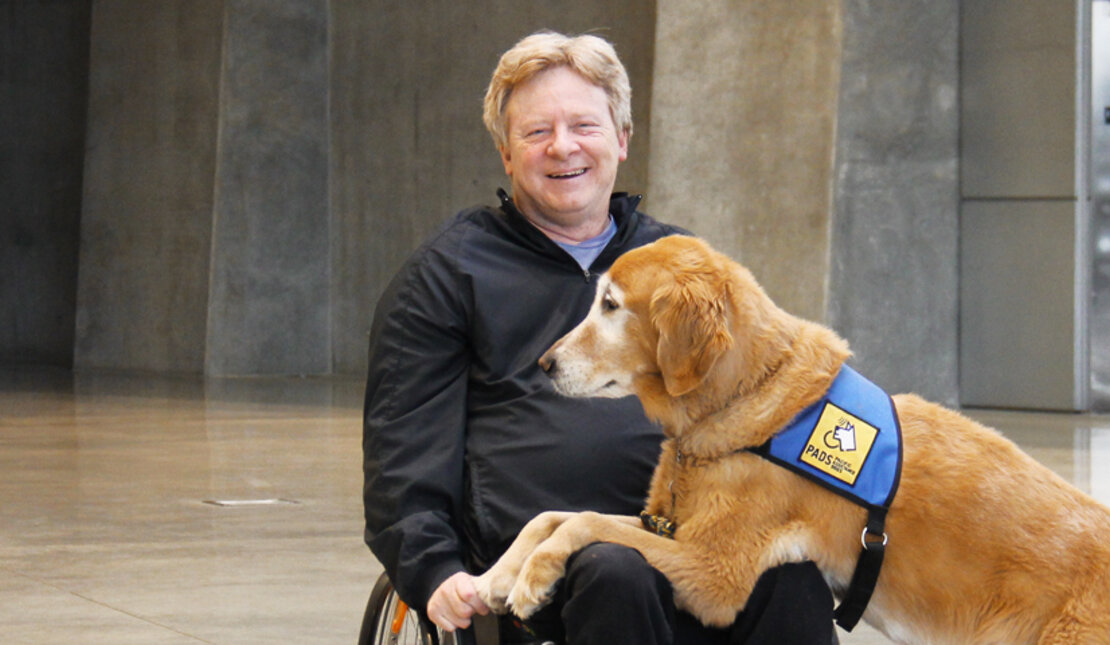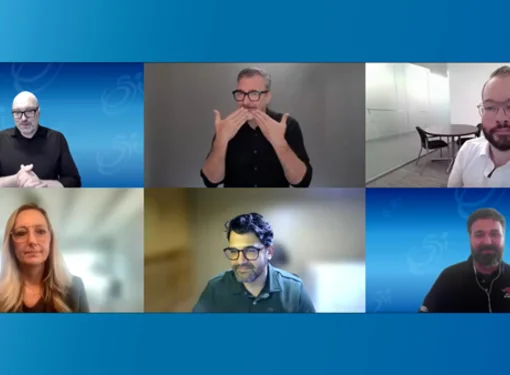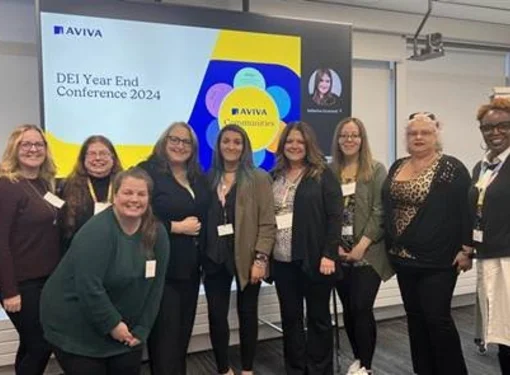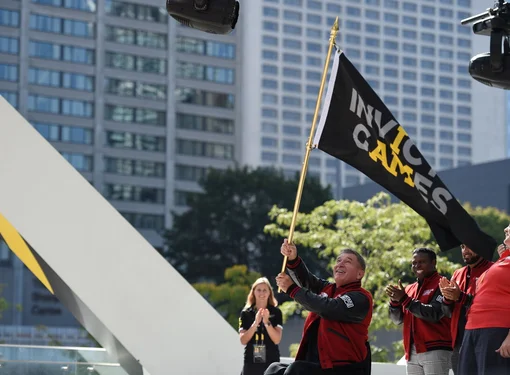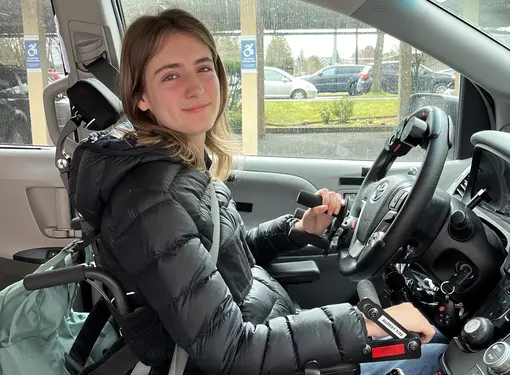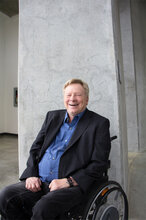From Where I Sit: Busting Five Myths of Universal Design
With roughly 20% of the population currently reporting as having a significant disability and 1,000 people turning 65 every day in Canada, the inescapable truth is that, in the new millennium, it is normal to have a disability. The built environment today has to adjust to accept this as the new ‘normal’.
The biggest barrier to real access are attitudinal barriers. These are the preconceived notions of what people with disabilities are capable of and the lack of understanding of access issues not covered by building codes. We will only be truly accessible when we change perceptions about disability. If mom can’t hear as well as she used to, if dad’s losing his vision, if your sister’s arthritis is acting up, if your friend is in a cast – temporary or permanent, these are all disabilities.
So, what keeps people from embracing Universal Design? Here are five myths that need busting:
Myth #1: Universal Design is for people using wheelchairs.
Universal Design doesn’t single out any part of the community. It’s not design for people with disabilities – it’s just better design. Most people don’t realize they use Universal Design features every day. These include stairs and handrails that are safer and more convenient, automatic doors, touchless faucets, and ramps with slopes that make pushing strollers or shopping carts easier. When spaces accommodate children’s varying needs, when seniors can independently use washrooms and retain their dignity, when people can stay in their homes and communities longer, everyone wins.
Universal Design is liberating. It doesn’t rely on standard design parameters aimed at healthy males aged 18-55. When a place works for everyone - say, a park with even-surfacing on trails and around accessible playground equipment - suddenly grandma shows up. Suddenly more kids with a range of abilities show up. Because they can.
Myth #2: Disability happens to other people, so Universal Design doesn’t reflect my needs.
If you’re young, able bodied, and healthy, you might never ask yourself how well your home treats you. Yet, over time, climbing up and down the stairs over and over will naturally wear out your knees. Excessive reaching, twisting and turning is all good when you are fit, but as you age these all just become contributing factors to the wear and tear on bodies already fighting aging itself. Combined with all the other activities we do daily, why not support the body as best we can? Universal Design does this.
If the world meets your needs as is, you probably don’t think about accessibility. Because you’re doing fine, you don’t always think about what others are going through. It’s so important to change how we perceive disability. People with disabilities are the largest minority group in the world. And the only minority group that you can join anytime.
It’s not about someone else. Any one of us could be in an accident, have a stroke, lose our hearing. The only questions are when will a disability happen to us, and how long will we live with one? Universal Design anticipates the needs of users now and well into their futures.
Including Universal Design in our buildings ensures the most good for the most people, with incredible social, cultural, and economic benefits.
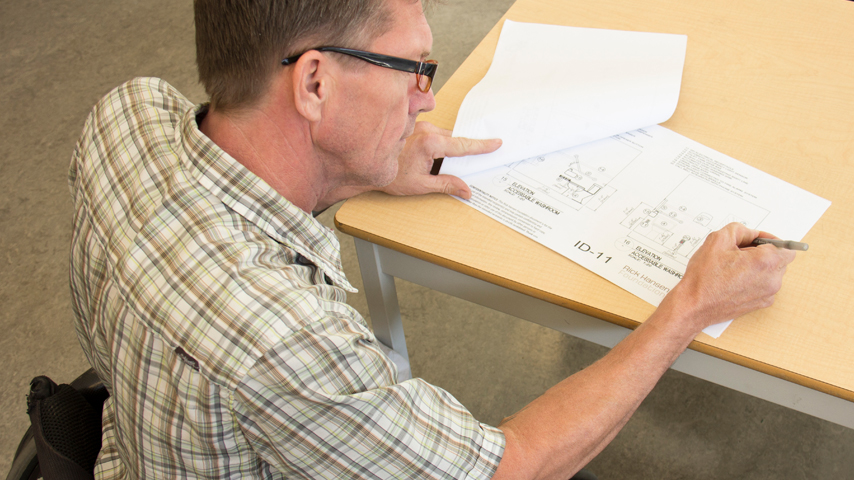
Myth #3: Accessibility is covered by building codes.
Universal Design is about how people experience a building as a whole, from entering to way-finding to emergency exiting. This is real, meaningful access - recognizing the full spectrum of people with disabilities. It’s not the same as code minimums.
In the construction industry, codes provide necessary stability, but not true accessibility. A building might have a code compliant accessible washroom with all the amenities, then place it directly at the top of a staircase, because code says, ‘You have to have an accessible washroom.’ But that doesn’t necessarily mean the routes and features required to get to the washroom itself are accessible. Also, codes tend to be focused on mobility issues, spending little time or effort identifying barriers and obstacles for people with sensory or intellectual challenges.
Universal Design can include aging-in-place solutions at home such as a duplex power box for bedside charging of mobility equipment and personal assistive such as hearing aids or scooters. It could include reinforced ceilings and wall backings to allow the installation of lifts, grab bars, or exercise pulleys. It can be as simple as handrails in long hallways, or seating along extended pathways and/or corridors.
The best, most cost-effective way to address and evaluate accessibility is in a project’s early- planning stages. Retrofits are costly. Why build new mistakes?
Myth #4: Universal Design is too expensive.
To save money, people often insist on building things their way now, thinking they, or someone else, will adapt it later. It creates inadequate spaces with physical barriers. All that drywall and refuse will eventually go straight into a landfill. It’s neither cost effective nor environmentally friendly.
The longer seniors are independent, the longer they remain out of the healthcare system. If a family upgrades mom’s bathroom for $1,000, they save thousands in monthly care-home fees. A lot of seniors’ housing is built cheaply using outdated designs that don’t consider people’s real needs. They might use thick pile carpeting, which creates tripping hazards, or single-pane glass which doesn’t reduce noise for people with hearing loss.
Here’s a concrete example. A multi-unit residential project in BC discovered that installing an accessible 36-inch (915mm) doors would increase costs by over $7 per door. In a 100 unit project, with 5 doors per unit, the results was a significant increase in costs. A BC Housing audit later determined that by installing the larger doors, framing each one typically required two fewer studs, roughly a $10 savings. Having all doors accessible saved the project money.
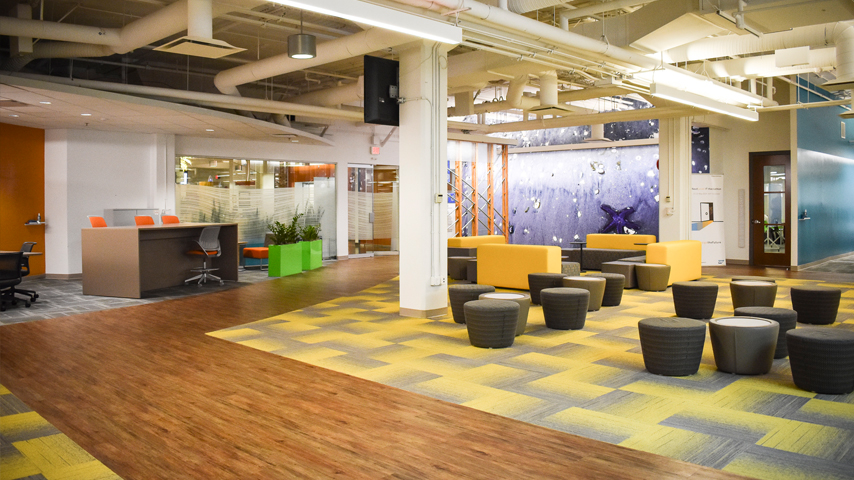
Myth #5: Universal Design is uncreative, ugly, and boring.
If anyone can easily get to where they need to go, and do what they need to do in a space, that’s Universal Design in action.
If accessible features are not seamlessly integrated in the overall design of the space, then chances are they represent a segregated design approach that separates people with disabilities from the main service and feature areas. To someone able-bodied and fit, a hallway is just a corridor with walls, a ceiling, and a floor. But for people with vision disabilities, maybe it needs handrails for guidance and support. If it’s built slightly wider, it benefits people using walking aids, wheelchairs, or accompanied by a service animal. If the exit corners are cut off at 45-degree angles, it would make for easier passage for everyone.
Universal Design opens up new opportunities for architects and designers tasked with making spaces and accessible features look great. Removing edges and corners is safer, good for mobility, and has a spacious, luxurious effect. A friend of mine had a small elevator installed on the exterior of her 100-year-old home crafted in cedar to perfectly match the house. The elevator became a feature - not an eyesore. My mother didn’t want a grab bar in her bathroom because aesthetics were more of a concern to her than her personal safety. But the grab bar stigma dissolved when she saw beautiful collections that more resemble towel racks, but can hold up to 600 pounds.
